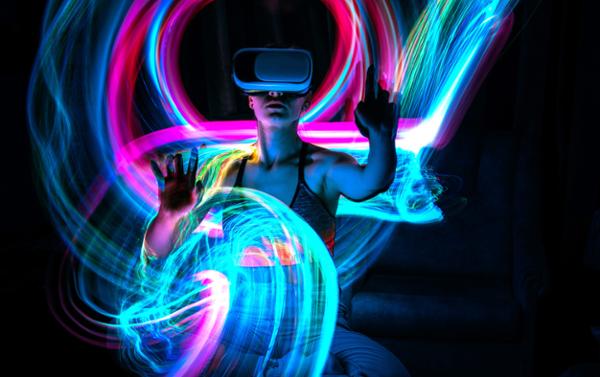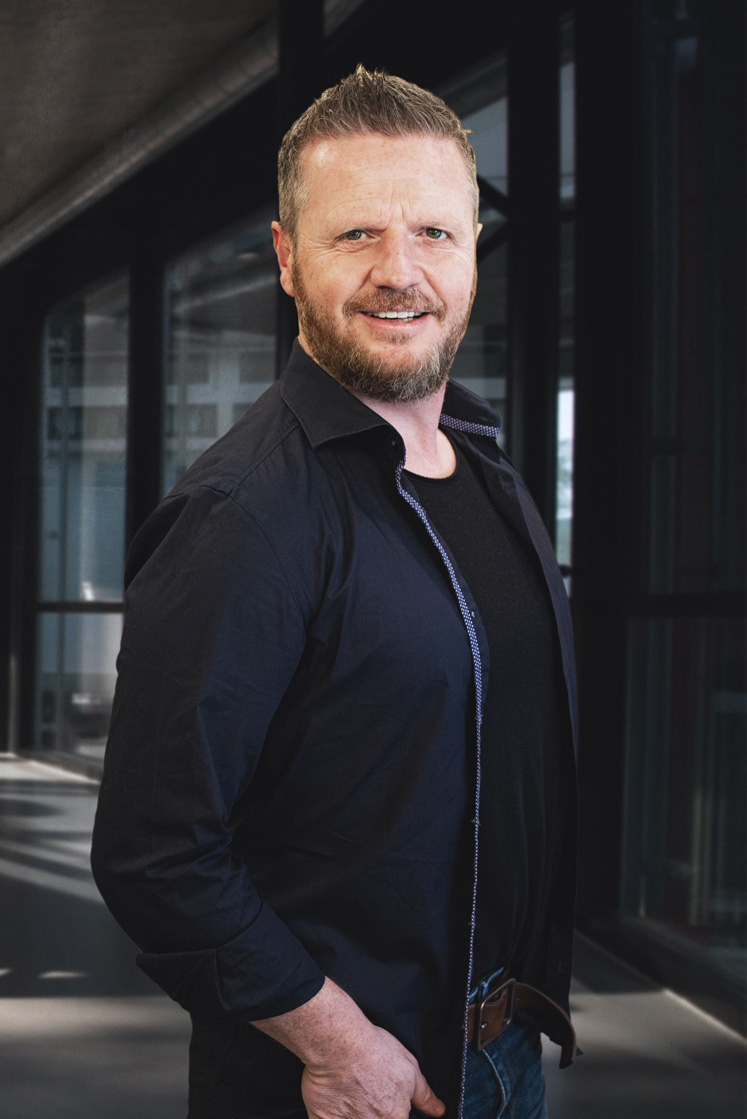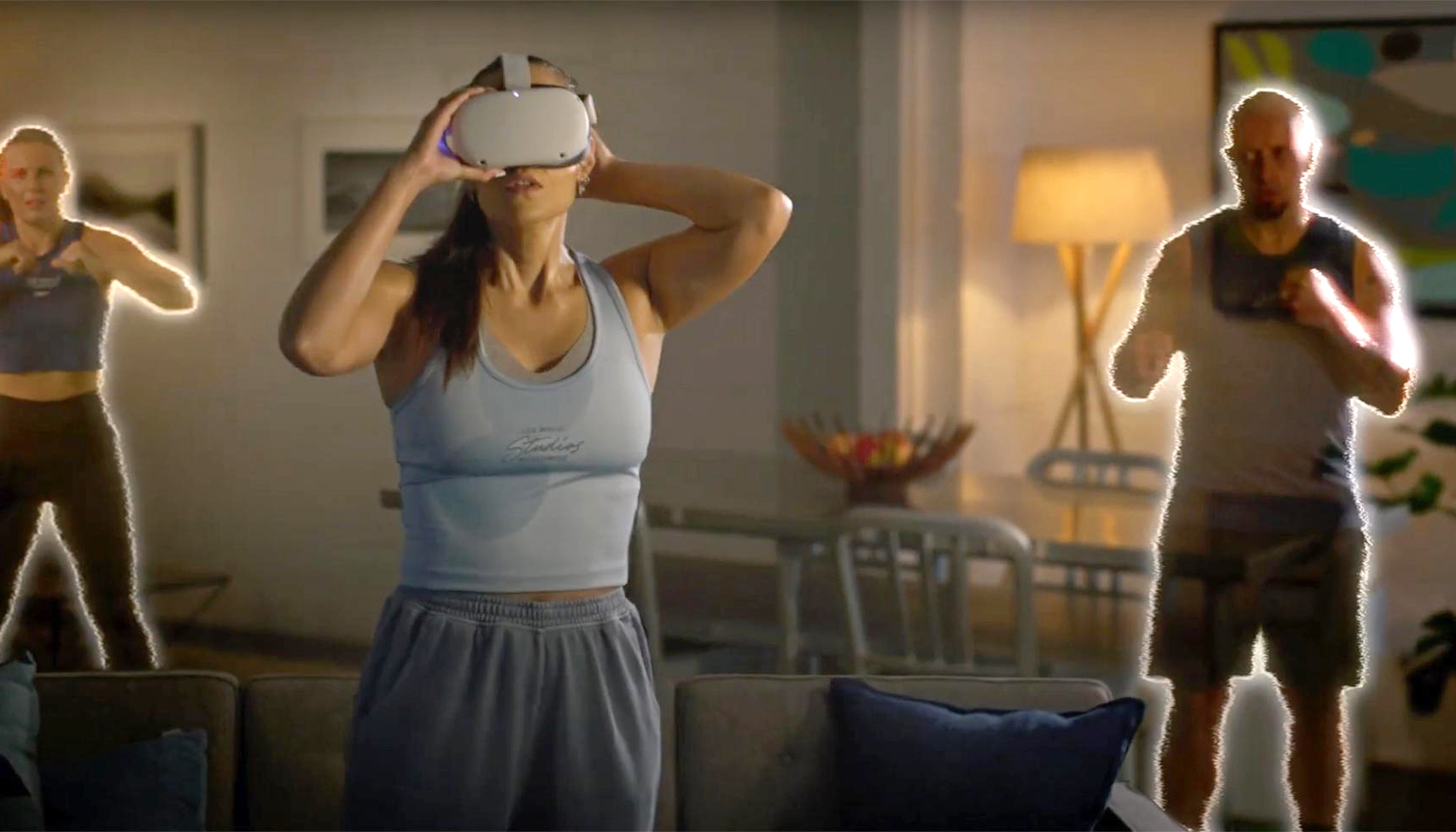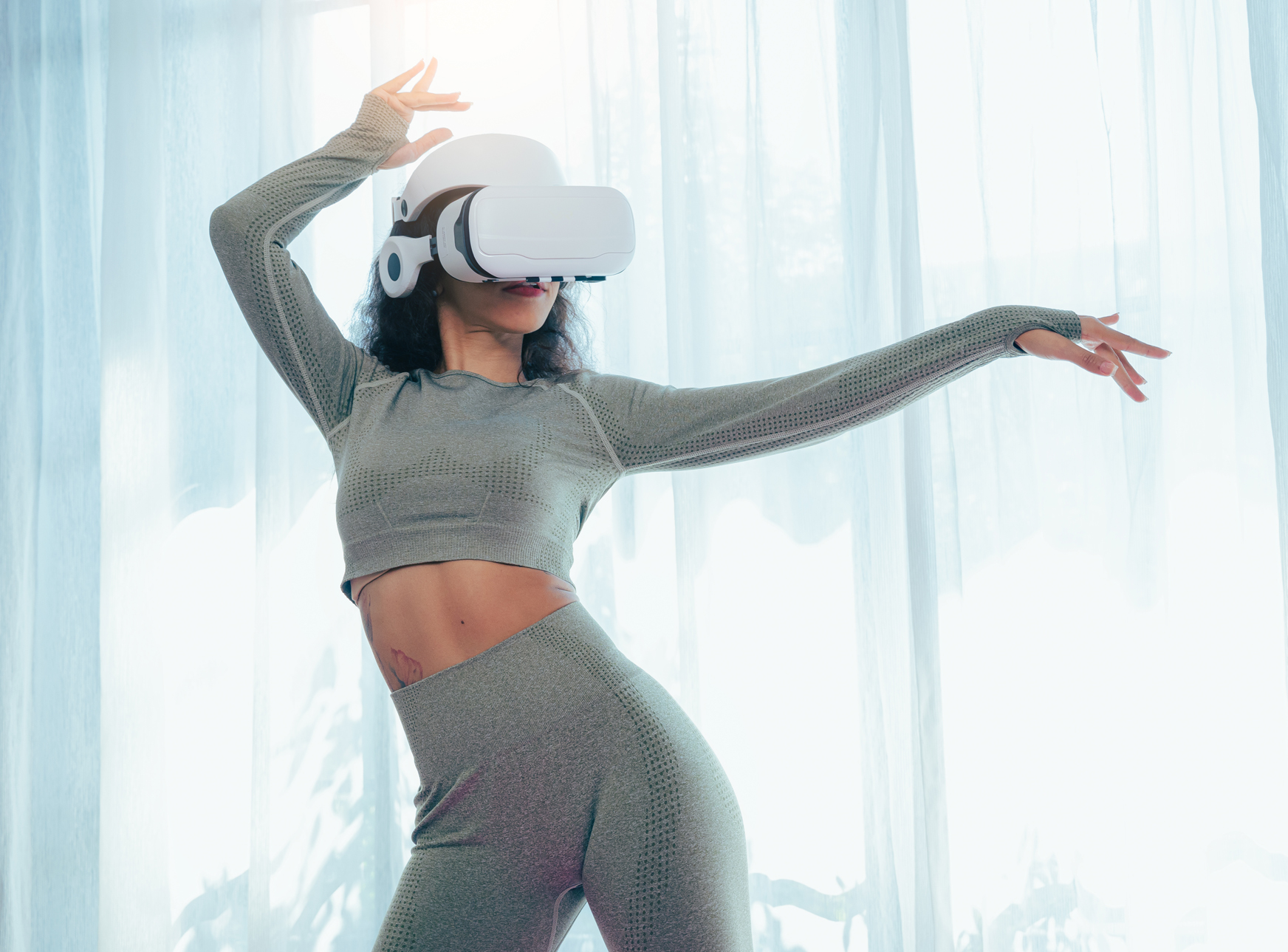 SELECTED
ISSUE
SELECTED
ISSUE
|
|
Leisure Management - The metaverse

Talking point

|
|
| The metaverse
|

Are you on board with the metaverse
or is it something to leave to the tech
team? Kath Hudson investigates
|


Consumers now enjoy at least one activity in the immersive world photo: shutterstock/Iryna Imago
|
|
|
The general consensus seems to be that metaverse is at the same stage of development as the internet in the late 1990s.
Nick Clegg, VP of global affairs and communications for Meta (Facebook), says: “The metaverse is coming, meaning the future of the internet will be more human than the way we experience it today – more physical, interactive and speech-based than flat screens filled with text and images.”
Matthew Ball, author of The metaverse and how it will revolutionise everything confirms this view, describing the metaverse as “a persistent and interconnected network of 3D virtual worlds, which will eventually serve as the gateway to most online experiences and also underpin much of the physical world.” Not an alternative to real life then, but part of our future way of engaging with each other.
According to metaverse expert Lesley Morisetti, director of Morisetti Associates, in the three weeks between late October and early November 2021, Google searches for the term metaverse grew by almost 1,500 per cent. Valuations are high and varied, with McKinsey giving a projected valuation of US$5tn by 2030 and Citi GPS estimating the market could be worth as much as US$13tn by 2030 in its report, Metaverse and Money.
Morisetti says that, as with the internet, it will take time to truly understand the new opportunities and for consumer behaviour to adapt. She says the drivers of growth will be creative content and environments that consumers want to spend time in and which enable them to drive their own interactions.
One advantage of the metaverse is that it has its own economy, with direct transactions between buyer and seller, because digital currencies such as NFTs are used, which don’t involve banks. However, decentralised finance such as this has pitfalls – there are reports of Instagram accounts being hacked, which has led to NFT collectibles worth millions of dollars being stolen. Without a middleman, there’s no protection.
Morisetti says there are further challenges before the metaverse can begin to realise its potential, including achieving realistic graphics to represent the physical world, safeguarding and content moderation. There are also challenges around the incompatibility of big tech such as Apple and Android – as each wants to dominate.
Finally, access barriers need to be solved. Citi GPS believes that to achieve the highest growth expectations access needs to be via more commonplace hardware than VR glasses.
So where is the health and fitness sector in relation to the metaverse and what’s the potential? We talk to experts and those who’ve already taken the plunge...
|
Eric Hazan
McKinsey

photo: McKinsey
While estimates of the potential economic value of the metaverse vary widely, our bottom-up view of consumer and enterprise use cases suggests it may generate up to US$5tn in impact by 2030 – equivalent to the size of the economy of Japan.
Changes in lifestyle are occurring as consumers experiment with everything from socialising to fitness, commerce, virtual learning, and other daily activities. Today, consumers say they prefer at least one activity in the immersive world compared to the physical alternative. Fitness (virtual reality exercise), shopping (purchasing physical goods) and attending social events are the top three reported metaverse experiences.
The metaverse appeals to everybody, not just a small group of users. There are already three billion ‘gamers’ in the world who have access to different versions of the metaverse. Beyond that, the use cases go far beyond gaming, with the only limit being our imagination.
Health and fitness can continue to evolve towards remote and more social and collaborative environments. Quality can be improved through becoming more immersive – for example, in service delivery and collaboration around R&D.
In healthcare, we can think about next-generation telemedicine, optimisation of hospital operations – which are now faster, safer and more accurate – remote diagnostics and procedures, fully-personalised health consultations driven by metaverse data, with real-time data access, or metaverse-enabled patient treatment robots treating patients solving employee shortages.
The metaverse poses urgent challenges which cuts across firms, their employees, independent developers and content creators, governments and – of course – consumers. Part of the workforce will need to be reskilled to take advantage of it rather than compete with it, and cities and countries serious about establishing themselves as hubs for its development will need to join the global competition to attract talent and investment.
The metaverse has obvious societal implications. Stakeholders will need to define a road map toward an ethical, safe, and inclusive metaverse. Guidelines may also be necessary around issues including data privacy, security, ethics and regulatory compliance, physical health and safety, sustainability and equity and fairness.
Virtual reality fitness, shopping and attending social events are the top three metaverse experiences
Kevin Yates
Trib3

Yates says Trib3 is launching an NFT project / photo: TRIB3
The metaverse is starting to challenge how we live our lives and experience the world around us. A great example of this is live events: millions of people have virtually attended concerts and gigs in the metaverse by Snoop Dogg, Ed Sheeran and Justin Bieber. Some of the world’s biggest brands are investing huge amounts of resources into this area because the digital world is the future. It’s an opportunity which can’t be ignored.
As a boutique fitness brand, Trib3 has gamification and community at its core, and we actively come up with new ideas and solutions to solve the problems the fitness industry faces regarding inactivity. Since it allows the delivery of rewarding and engaging fitness experiences, the metaverse is perfectly aligned to our goals.
Understanding how your brand can communicate and engage on a physical and digital level is so important. GenZ and Gen Alpha – our future guests – expect brands to deliver first-class experiences online as well as offline. In an always-on culture, we believe Trib3 needs to be accessible 24/7, with a strong digital footprint to support our scaling physical presence. The metaverse will allow us to reach a new audience and penetrate a new group of individuals, introducing them to our brand before they come and see us on a physical level.
We have lots of ideas about how we’ll be able to use the metaverse to generate additional revenue. Our first revenue stream will be to launch an NFT project later this year. We also want people to earn Dose Tokens by exercising and then spending these within our connected eco-system which in turn will also drive revenues, not to mention attracting new audiences.
Since it allows the delivery of engaging fitness experiences, the metaverse is perfectly aligned to our goals
James Graham
Les Mills International

photo: Les Mills
We chose to invest in the metaverse because innovation is in our DNA and we’re constantly looking at opportunities to evolve our offering to ensure we’re helping as many people as possible fall in love with fitness.
Workout content and programming is a key part of how we innovate, but also stretching ourselves as we think about how and where different people want to work out. As the whole world evolved through the onset of COVID-19, taking one of our most popular classes, Bodycombat, to the metaverse seemed like an exciting opportunity to push our boundaries.
With our 50+ years of fitness heritage, we knew our newest offering had to be a fantastic workout that delivers results.
Where numbers are concerned, we’ve been bowled over with the response so far – to date we’re sitting at a 4.6/5 star rating in the app store, with 55k sold.
We genuinely think the Bodycombat VR app can appeal to anyone. It talks to the fitness gamers who are looking for a great science-backed workout, as well as our current Les Mills fans who are looking for a new and exciting way to experience one of their favourite programmes. Beyond that, the beauty of the Bodycombat VR app is that we can tailor workouts for all fitness levels and take people through the workouts in a safe and progressive way.
Having a presence in the metaverse offers an exciting opportunity to broaden market appeal and take fitness to a much wider, and typically younger, audience. Advancements with VR headsets have demonstrated that our favourite instructors could soon become quite literally on-demand, able to appear wherever we wear our mixed reality headsets, in whatever language we require. It could also mean members need never miss their favourite class, being able to virtually join their club’s group exercise studio in the metaverse from anywhere in the world.
Like any innovative undertaking, there are challenges in bringing this to life. Some elements still don’t translate to wearing a headset, like round-house kicks, so we had to look at the elements we could bring across. We pushed our VR specialists at Odders Labs pretty hard to bring new functionality, such as enabling knee strikes, to ensure we’re embracing the broader martial arts category.
Our favourite instructors could soon become literally on-demand, able to appear wherever we wear our mixed reality headsets, in any language

Les Mills workouts are now available in the metaverse / photo: Jacob Lund-shutterstock
Andy Hall
OliveX /The Fitness Metaverse

photo: OliveX
We set up the Fitness Metaverse in the Sandbox and own a 12 x 12 parcel space, sitting next to the likes of Adidas and Atari, Binance and Snoop Dogg. We’re working with brands, businesses and individuals who share our vision of encouraging more people to move.
We’re taking our lead and inspiration from the US$800m play-to-earn model and market, which shows no sign of slowing down. We want to take this concept and apply it to encouraging new audiences to exercise, move more and quite literally invest in their health and wellbeing.
There’s a waiting list to join the launch of our Dose Land experience (The Sandbox Game) and NFT projects. Some of the most forward-thinking brands were first to the table – the likes of Playinnovation, Trib3, Stages, Hero, Salsation and Myzone – all with amazing ways to motivate, inspire and create a point of difference; not to mention drive more revenue.
The metaverse is already worth billions and the potential is beyond what we can comprehend right now. Aside from the economics, the metaverse has the potential to tap into new audiences and target the 80 per cent of non-gym goers we've all been going after for decades.
We have an opportunity to motivate people through gamification of fitness and with more than a promise of improving their wellbeing, as they have the potential to earn currency while working out.
We’re coupling this with the ability to virtually visit health and fitness brands/spaces within the Fitness Metaverse.
Brands can replicate their physical spaces online or create the ultimate brand experience. The true value will come when brands can fuse the two and offer considerable value both on and offline. This is quite literally connected fitness 3.0.
We launched our first NFT project in June when we sold 600 US$150 NFTs (avatars) for apparel brand Gym Aesthetics in four hours. Some of them are now trading on the secondary market for near US$1,000. This was a small project but we have more opportunities coming up later this year.
Targeting new demographics in the NFT, crypto and gaming space will also bring new members into the sector, but it’s not just about selling more memberships, it’s ultimately about what value we can deliver to the consumer.
We have an opportunity to motivate people through gamification. They have the potential to earn currency working out

photo: Brands can replicate their physical spaces in the metaverse / shutterstock/Preechar Bowonkitwanchai
|
|
 |
| Originally published in Health Club Management 2022 issue 7
|
|
 |
|